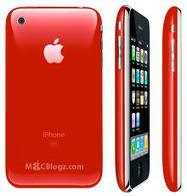
In short, the iPhone and the iPad are much the same in terms of what they can do. Their glaring difference is that the iPhone is a phone, and the iPad is not. In other words, the iPhone can be-and is primarily-used to make phone calls, while the iPad is more like a netbook or portable personal computer. Another difference that stands out is their sizes. The iPhone has a 480×320 touchscreen, while the iPad has a much larger one that measures 1024×768 pixels. Looking at the two devices, about six iPhone units can be placed on the surface of an iPad.
The size difference is a key factor in comparing iPad and iPhone apps. Practically all iPhone apps (except those for making calls) may be downloaded on the iPad. The apps will work pretty much the same except that they will appear bigger to fit the larger iPad touchscreen. But not all apps meant for the iPad will work on the smaller iPhone. Apps that are native to the iPad use greater detail to take advantage of the larger touchscreen space. If these apps could be "shrunk" on the smaller iPhone screen, they wouldn't look as great-in fact, they might as well be unreadable. This is the reason why native iPad apps cannot be downloaded to an iPhone. But, just to make a point clear, the reverse can be done: most iPhone apps can be downloaded to and used on an iPad.
Examples of native iPad apps that won't work on the iPhone are magazine and newspaper apps. On the iPad, a magazine spread looks great and is very readable. But imagine the same on an iPhone screen. The pictures and text in a magazine or newspaper article won't simply fit on the smaller space.
Can it be said then that apps are better on the iPad than on the iPhone? This is close to the truth, but it's not quite there yet. While it is true that practically all iPhone apps can migrate to and function well on the iPad, an aesthetic loss is incurred in the process. Apps that are native to the iPhone, when viewed in an enlarged manner on the iPad, look less sharp, more pixelated. One may see jagged edges and blurry parts on the graphics of these apps. This naturally results from enlarging or doubling graphics originally composed for a smaller screen. This effect is known as "pixel doubling."
To correct pixel doubling, the iPad user is given the option to view a native iPhone app in its original, smaller size. Thus, on the iPad, the app will occupy just about one-half of the screen. For some native iPhone apps, there is also an option to download a higher-resolution version. With this, the app looks great on the iPad as it does on the iPhone.
There too are apps that have both iPad and iPhone versions. The user simply has to download the correct version to enjoy the apps with all their graphics and functionality intact.
Find reviews on new apps for iPhone and iPod touch, ipad games, and everything else at AppCraver.com, a website dedicated to app reviews for all of the iDevices.

